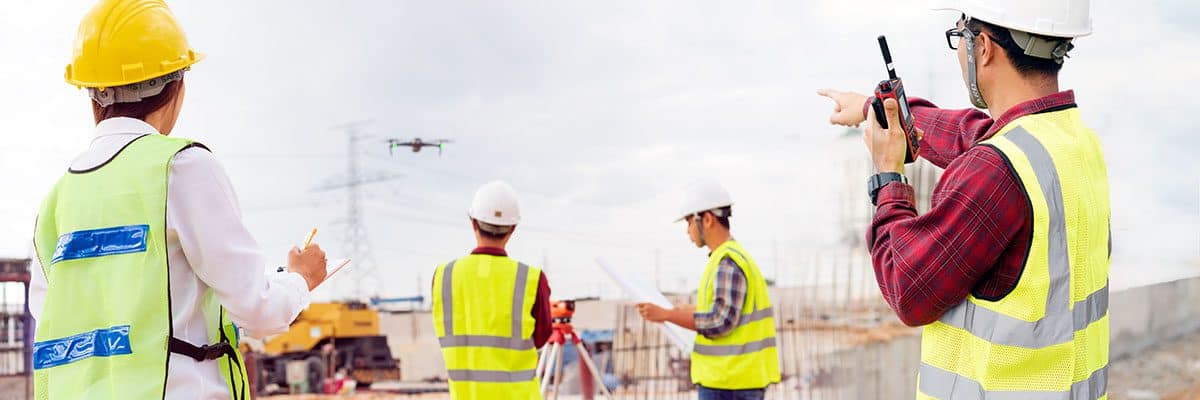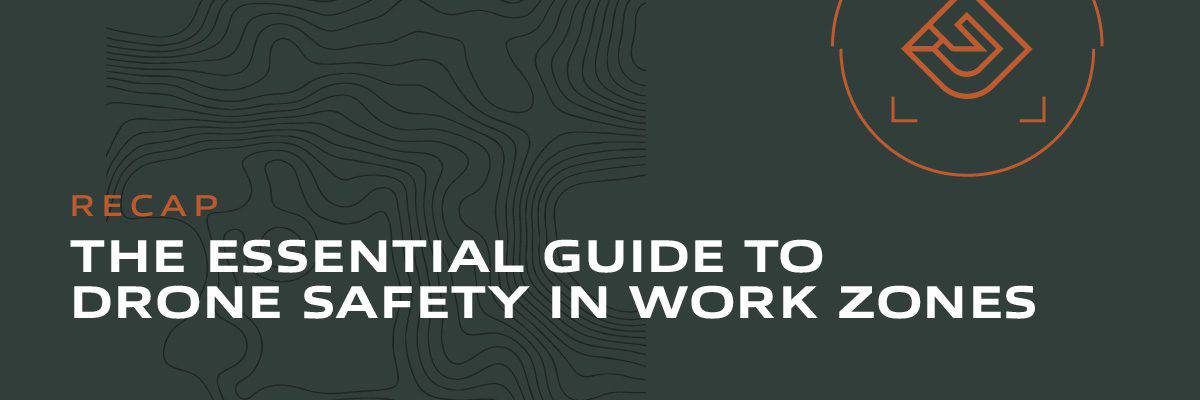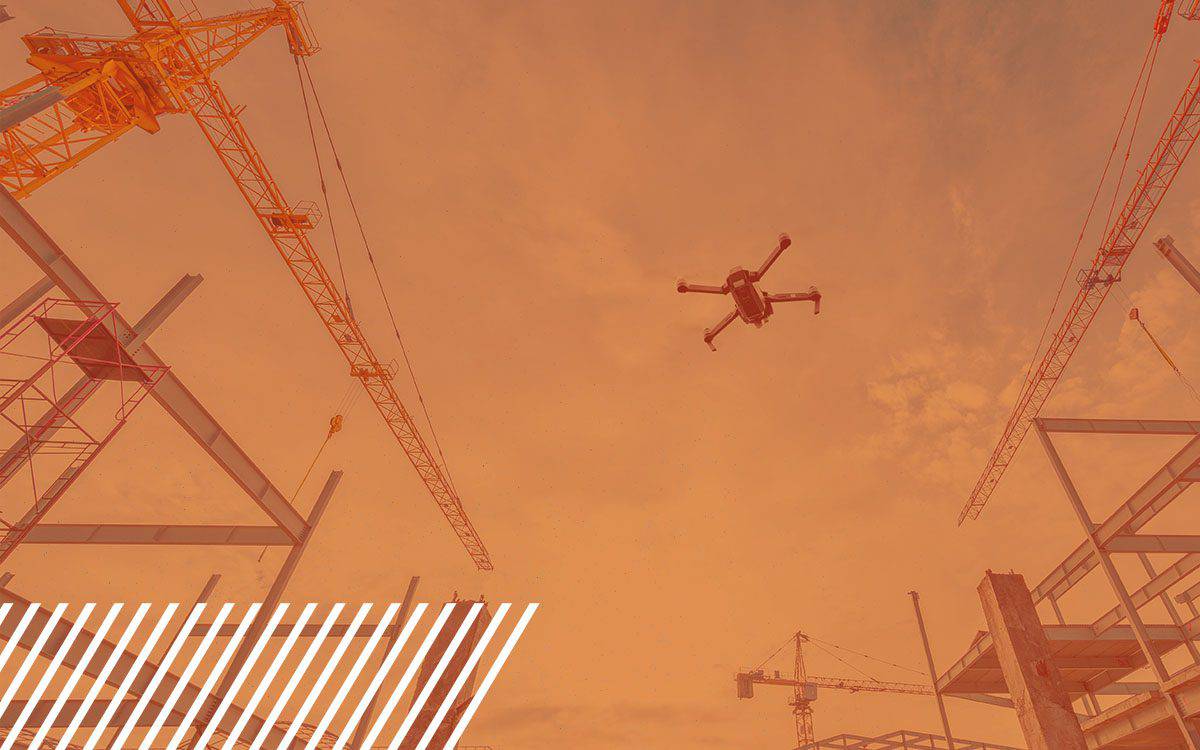
Navigating the Skies: The Essential Guide to Drone Safety in Work Zones
As drones continue to significantly enhance professional settings, understanding the intricacies of flying these high-tech devices amidst the bustling environment of work zones has never been more crucial. From enhancing construction site inspections to monitoring agricultural lands, drones are pushing the boundaries of what’s possible. Yet, as their applications grow, so does the importance of adhering to strict safety regulations and measures. As professional data capturers, we aim to shed light on the fundamental aspects of drone operations in work zones, ensuring that your aerial activities are not just innovative but also secure and lawful. Read on to navigate through the complexities of drone regulations, safety protocols, and best practices, preparing you for a future where drones become even more integral to our professional landscapes.
Understanding Drone Regulations
The foundation of safe and effective drone operation begins with a comprehensive understanding of the regulations governing these devices. Whether you’re piloting drones for surveying, inspection, or other commercial purposes, staying informed about the legal landscape is crucial.
Federal and Local Laws
The Federal Aviation Administration (FAA) plays a pivotal role in the regulation of commercial drone use in the U.S. The FAA’s Part 107 is the primary set of rules for operating small unmanned aircraft systems (UAS) commercially. These regulations cover everything from pilot certification to operational limitations, ensuring that drone activities do not pose a risk to public safety or national airspace. However, navigating drone laws isn’t just about understanding federal regulations. Local laws can also significantly impact drone operations, with specific areas imposing additional restrictions to protect privacy or prevent disturbances. It’s essential for drone operators to familiarize themselves with the laws of the land, both federal and local, to avoid unintended violations.
Certifications and Permissions
Obtaining a Part 107 certification is a crucial step for anyone looking to become a commercial drone pilot. This certification demonstrates a comprehensive understanding of airspace rules, safety practices, and operational regulations, ensuring that data capturers are well-equipped to navigate the skies responsibly. Beyond certification, certain drone operations may require additional waivers or authorizations, especially when flying in restrictedpx” airspace or conducting activities beyond the standard operational limits set by the FAA. Understanding how to apply for these permissions is an integral part of compliant drone operation.
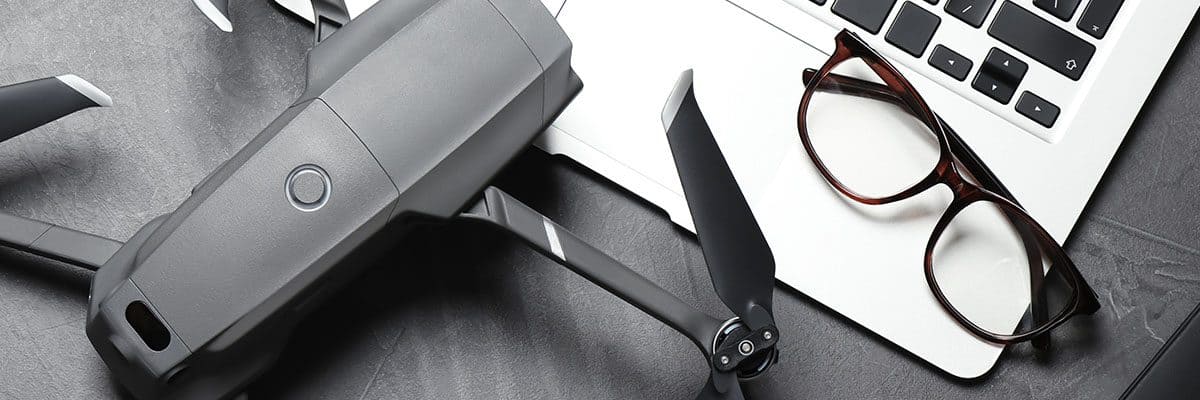
Safety Protocols for Drone Operations in Work Zones
Ensuring the safety of both drone operations and the people on the ground in work zones is paramount. As drones take to the skies, operators must adhere to a set of safety protocols designed to minimize risks and protect all involved.
Pre-Flight Preparations
Before a drone ever leaves the ground, a series of critical checks and preparations must be conducted to ensure a safe flight. These preparations begin with a comprehensive risk assessment, identifying potential hazards within the work zone and ensuring the drone is ready to fly. This includes checking the drone’s battery life, making sure all systems are functional, and verifying that the firmware is up-to-date. Additionally, pilots should be familiar with the area’s layout, potential obstacles, and the specific tasks the drone will perform. By meticulously planning and preparing for each flight, drone pilots can significantly reduce the likelihood of accidents or disruptions.
During Flight
Maintaining control and situational awareness during flight is crucial for drone safety. This involves keeping the drone within visual line of sight at all times and avoiding hazardous maneuvers that could lead to collisions or loss of control. Operators must be acutely aware of their surroundings, respecting no-fly zones and temporary flight restrictions. Furthermore, communication with onsite personnel ensures everyone is informed about the drone’s operations, reducing the risk of accidents or misunderstandings. By adhering to these guidelines, drone pilots can ensure their flights are not only productive but also safe for everyone involved.
Post-Flight Procedures
After the drone has landed, the focus shifts to data handling, equipment maintenance, and storage. Properly managing the data collected during flight is essential, especially when it pertains to privacy concerns or sensitive information. Securely storing and processing this data ensures compliance with regulations and maintains the integrity of the operation. Meanwhile, regular equipment maintenance and careful storage practices prolong the drone’s life and ensure it’s ready for the next mission. These post-flight procedures are crucial steps in maintaining a safe and efficient drone operation within work zones.
Check out our Pilot Checklist here.
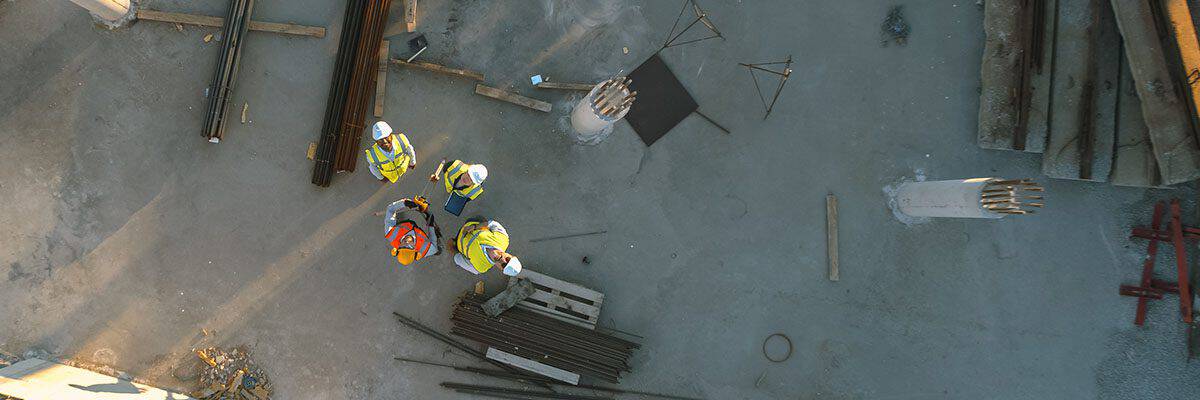
Case Studies and Best Practices
Learning from both successes and failures is key to advancing drone safety in work zones. Let’s explore real-world examples of drone operations, shedding light on best practices and lessons learned.
Successful Drone Operations
Highlighting successful drone operations in work zones serves as a powerful testament to the benefits of adhering to safety and regulatory standards.
One example of a safe and successful drone flight was that from a construction project in the middle of a bustling city. The project manager outsourced a data capture professional to aid in surveying, inspecting and progress monitoring. Before each flight, the drone pilot conducted thorough pre-flight checks to ensure that the drone’s batteries were fully charged, its firmware was updated, and all components were in optimal working condition. She also reviewed the day’s weather conditions to confirm it was favorable for flying.
Understanding the importance of clear communication, the pilot coordinated with the local aviation authority to notify them of the drone operations. She submitted a detailed flight plan, which included the drone’s flight path, altitude, and duration, to ensure it wouldn’t interfere with manned aircraft operations and adhere to no-fly zone restrictions.
Each drone operation is meticulously planned to avoid overflight of populated areas and ensure minimal disruption to the surrounding community. The drone pilot used geofencing, a technology that creates a virtual boundary around the operation area, to keep the drone within safe and legal limits. This not only prevents the drone from straying into unauthorized areas but also adds an extra layer of safety by automatically guiding the drone back to a pre-defined zone if it encounters a signal loss or low battery.
During the flights, the drone pilot had a designated spotter who assisted her by keeping a visual line of sight with the drone at all times, helping to navigate around obstacles, and alerting the pilot to any unforeseen hazards. This teamwork approach ensured that the drone operations were conducted safely and efficiently, with minimal risk of accidents or damage.
The construction project benefited immensely from the drone’s capabilities thanks to these stringent safety practices. The aerial data collected provided the project manager with detailed insights into the site’s progress, identified potential issues before they became costly problems, and aided in planning future work. Furthermore, by utilizing drones for tasks that would typically require human presence in potentially dangerous areas, accidents were significantly reduced, thereby enhancing the overall safety of the site’s workforce.
This scenario exemplifies how embracing best practices in drone operations can lead to successful outcomes. By prioritizing safety, regulatory compliance, and effective communication, drones can serve as invaluable tools in construction and many other industries, offering enhanced efficiency, cost savings, and, most importantly, a safer working environment.
Lessons Learned from Mishaps
Despite best efforts, mishaps can occur. However, each incident provides a valuable learning opportunity. For instance, a customer hired a freelance pilot outside of a third-party network to capture footage of some acreage of a property, densely populated with trees. Eager to impress his client and confident in his piloting skills, the drone pilot bypassed several key pre-flight safety checks, underestimating the potential consequences. He did not survey the area for obstacles, nor did he check the drone’s battery life or calibrate its compass, believing the job to be quick and straightforward.
Moments after takeoff, the flight plan encountered unexpected gusts of wind. The uncalibrated compass and weakened battery further compromised its stability. Struggling to maintain control, the drone veered off course and crashed into a tree, causing damage to the drone itself. This incident resulted in a significant financial loss for the pilot as well as time lost for the customer.
This scenario is a sobering reminder that, in the world of drone piloting, overconfidence can lead to oversight, and the neglect of safety measures can have serious repercussions. By following best practices and respecting the power of these sophisticated machines, drone pilots can safely navigate the skies, ensuring the integrity of their operations and the safety of the communities around them.
______________________________________________________________________
“Make it a habit to view the checklist and workflow documents for every job – no matter how confident and experienced you may be as a pilot. Doing so can save you from having to return to a site because a piece of equipment was forgotten at home.” – Jeremiah, drone pilot
______________________________________________________________________

The Future of Drone Safety in Work Zones
As drone technology continues to evolve, so too will the safety protocols and regulations governing their use in work zones. Staying informed about these changes is crucial for drone operators seeking to maintain compliance and ensure safety.
Emerging Technologies and Regulations
The future of drone safety in work zones is bright, with innovations in drone technology and regulatory frameworks aiming to enhance operational safety and efficiency. Advanced sensing and avoidance systems are becoming more prevalent, enabling drones to navigate more safely around obstacles and reduce the risk of collisions. Additionally, the integration of artificial intelligence (AI) and machine learning (ML) technologies is improving the accuracy of risk assessments and operational planning.
On the regulatory front, authorities are exploring new ways to integrate drones into national airspace systems safely. This includes the development of remote identification standards, which will help manage air traffic and enhance safety by making it easier to identify and track drone operations in real time. As these technologies and regulations come into play, operators must remain vigilant, adapting their practices to stay compliant and safe.
Read more about remote identification here.
______________________________________________________________________
Jerimiah’s tip on safety: “As drone pilots, we share the sky with manned aircraft, so it’s essential that we always be vigilant of low-flying aircraft.”
- Rule 14 CFR § 107.37: Each small unnamed aircraft must yield the right of way to all aircraft, airborne vehicles, and launch and reentry vehicles.
______________________________________________________________________
Staying Informed and Prepared
For drone pilots, staying informed about the latest developments in drone technology and regulations is key to navigating the future of work zone safety. This can involve participating in industry forums, attending training sessions, and closely monitoring announcements from regulatory bodies like the FAA.
It is also highly advised that drone pilots actively seek out new certifications and training opportunities, ensuring their skills and knowledge remain at the cutting edge. By embracing a culture of continuous learning and improvement, data capturers enhance their own operational safety and contribute to the broader goal of safe and efficient drone integration into work zones.
________________________________________________________________________
Drone pilot, Kevin Perberg on keeping up with industry trends and developments:
“I love to learn and keep up with industry news and best practices. Drone U has extensive resources to learn different techniques and tips. I scour YouTube for videos by other pilots to learn their tips and tricks. There are so many free resources, but I have also invested in specific pieces of training for more in-depth knowledge.”
_______________________________________________________________________
Safety First
It’s clear that while the benefits of drone technology are immense, they come with a responsibility to operate these devices with the utmost care and adherence to regulations. From understanding federal and local laws to implementing robust safety protocols and keeping an eye on future developments, every step taken toward safety and compliance not only protects those on the ground but also ensures the sustainable integration of drones into professional landscapes.
As we look to the future of drones, we should continue to prioritize safety, embrace innovation, and work together to navigate the ever-evolving skies above our work zones. By doing so, we ensure that drones remain invaluable tools in our quest for efficiency, productivity, and safety in various industries.
Key Lessons and Best Practices
- Pre-Flight Checklist: Always complete a comprehensive pre-flight checklist that includes checking the drone’s battery level, calibrating the compass, and inspecting the drone for any physical damage or malfunctioning components.
- Survey the Area: Before flying, survey the area for potential hazards such as buildings, towers, trees, and power lines. Understanding the environment helps in planning a safe flight path.
- Weather Conditions: Check the weather forecast. Wind, rain, and even high humidity can affect drone performance and safety.
- Regulatory Compliance: Familiarize yourself with local regulations regarding drone flights. This includes notifying relevant authorities or air traffic control when required, especially in densely populated or sensitive areas.
- Emergency Procedures: Have a plan in place for potential emergencies, including technical failures or unexpected environmental conditions.
